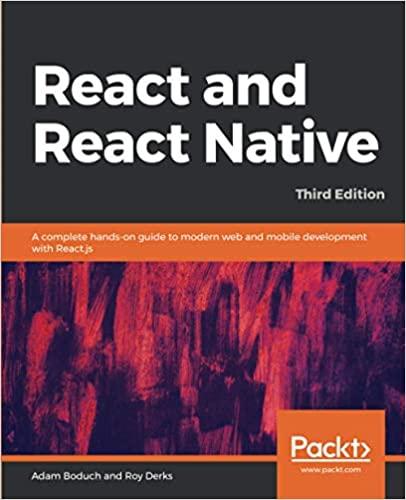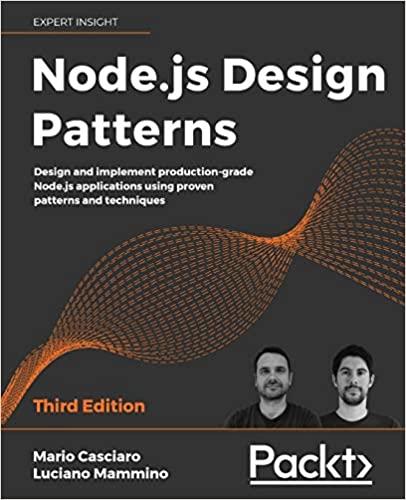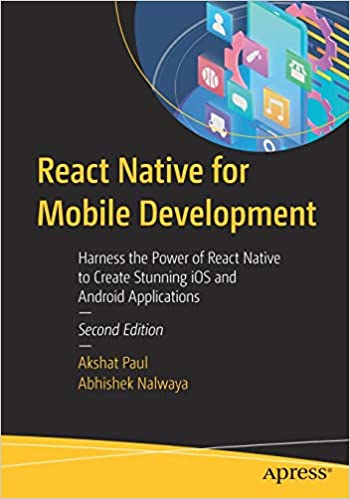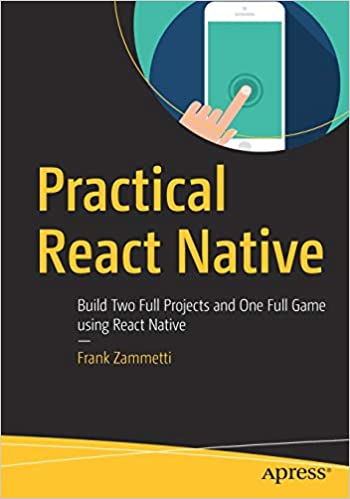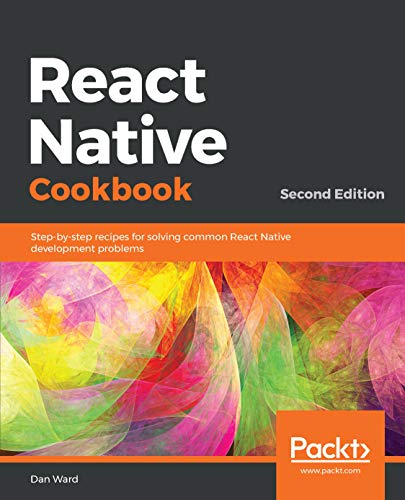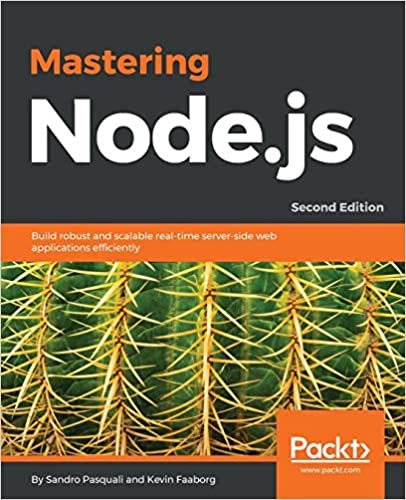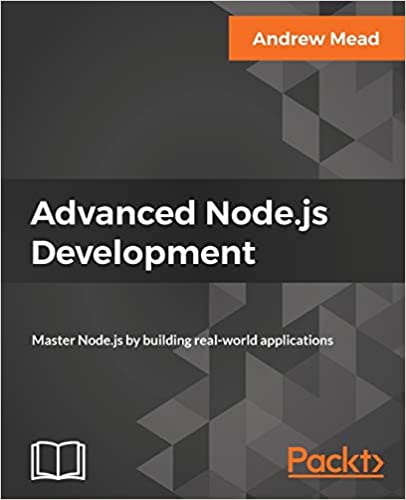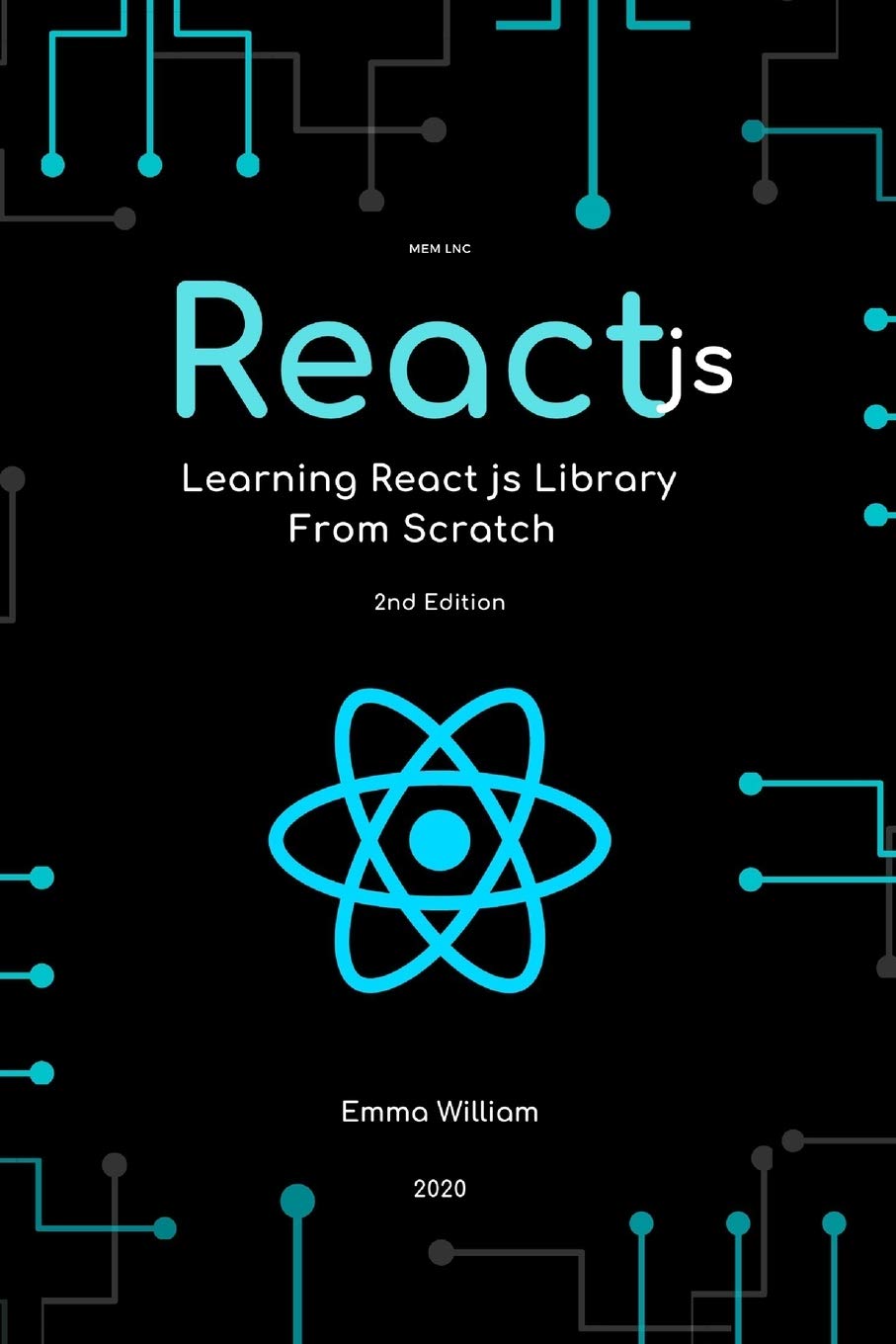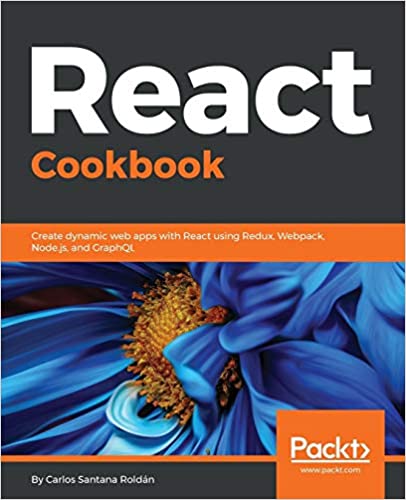Integrating D3.js with React: Learn to Bring Data Visualization to Life 1st ed. Edition
Integrate D3.js into a React TypeScript project and create a chart component working in harmony with React. This book will show you how utilize D3 with React to bring life to your charts.
Seasoned author Elad Elrom will show you how to create simple charts such as line, bar, donut, scatter, histogram and others, and advanced charts such as a world map and force charts. You’ll also learn to share the data across your components and charts using React Recoil state management. Then integrate third-party chart libraries that are built on D3 such as Rechart, Visx, Nivo, React-vi, and Victory and in the end deploy your chart as a server or serverless app on popular platforms.
React and D3 are two of the most popular frameworks in their respective areas – learn to bring them together and take your storytelling to the next level.
What You’ll Learn
Set up your project with React, TypeScript and D3.js
Create simple and advanced D3.js charts
Work with complex charts such as world and force charts
Integrate D3 data with React state management
Improve the performance of your D3 components
Deploy as a server or serverless app and debug test
Who This Book Is For
Readers that already have basic knowledge of React, HTML, CSS and JavaScript.
React and React Native: A complete hands-on guide to modern web and mobile development with React.js, 3rd Edition
Price : $33.24
Book Purchase link : https://www.amazon.com/React-Native-complete-hands-development/dp/1839211148
Get up to speed with React, React Native, GraphQL and Apollo for building cross-platform native apps with the help of practical examples
Key Features
Covers the latest features of React such as Hooks, Suspense, NativeBase, and Apollo in this updated third edition
Get to grips with the React architecture for writing easy-to-manage web and mobile applications
Understand GraphQL and Apollo for building a scalable backend for your cross-platform apps
Book Description
React and React Native, Facebook’s innovative User Interface (UI) libraries, are designed to help you build robust cross-platform web and mobile applications. This updated third edition is improved and updated to cover the latest version of React. The book particularly focuses on the latest developments in the React ecosystem, such as modern Hook implementations, code splitting using lazy components and Suspense, user interface framework components using Material-UI, and Apollo. In terms of React Native, the book has been updated to version 0.62 and demonstrates how to apply native UI components for your existing mobile apps using NativeBase.
You will begin by learning about the essential building blocks of React components. Next, you’ll progress to working with higher-level functionalities in application development, before putting this knowledge to use by developing user interface components for the web and for native platforms. In the concluding chapters, you’ll learn how to bring your application together with a robust data architecture.
By the end of this book, you’ll be able to build React applications for the web and React Native applications for multiple mobile platforms.
What you will learn
Delve into the React architecture, component properties, state, and context
Get to grips with React Hooks for handling functions and components
Implement code splitting in React using lazy components and Suspense
Build robust user interfaces for mobile and desktop apps using Material-UI
Write shared components for Android and iOS mobile apps using React Native
Simplify layout design for React Native apps using NativeBase
Write GraphQL schemas to power web and mobile apps
Implement web and mobile components that are driven by Apollo
Who this book is for
This book is for any JavaScript developer who wants to start learning how to use Facebook’s UI libraries, React and React Native, for mobile and web application development. Although no prior knowledge of React is needed, working knowledge of JavaScript programming will help you understand the concepts covered in the book more effectively.
Table of Contents
Why React?
Rendering with JSX
Component Properties, State, and Context
Getting Started with Hooks
Event Handling – The React Way
Crafting Reusable Components
The React Component Life Cycle
Validating Component Properties
Handling Navigation with Routes
Code Splitting Using Lazy Components and Suspense
Server-Side React Components
User Interface Framework Components
Why React Native?
Kick-Starting React Native Projects
Building Responsive Layouts with Flexbox
Navigating Between Screens
Rendering Item Lists
Showing Progress
Geolocation and Maps
Collecting User Input
Displaying Modal Screens
Responding to User Gestures
Controlling Image Display
Going Offline
Native UI Components Using NativeBase
Handling Application State
Why Apollo?
Building an Apollo React App
Node.js Design Patterns: Design and implement production-grade Node.js applications using proven patterns and techniques, 3rd Edition
Learn proven patterns, techniques, and tricks to take full advantage of the Node.js platform. Master well-known design principles to create applications that are readable, extensible, and that can grow big.
Key Features
Learn how to create solid server-side applications by leveraging the full power of Node.js 14
Understand how Node.js works and learn how to take full advantage of its core components as well as the solutions offered by its ecosystem
Avoid common mistakes and use proven patterns to create production grade Node.js applications
Book Description
In this book, we will show you how to implement a series of best practices and design patterns to help you create efficient and robust Node.js applications with ease.
We kick off by exploring the basics of Node.js, analyzing its asynchronous event driven architecture and its fundamental design patterns. We then show you how to build asynchronous control flow patterns with callbacks, promises and async/await. Next, we dive into Node.js streams, unveiling their power and showing you how to use them at their full capacity. Following streams is an analysis of different creational, structural, and behavioral design patterns that take full advantage of JavaScript and Node.js. Lastly, the book dives into more advanced concepts such as Universal JavaScript, scalability and messaging patterns to help you build enterprise-grade distributed applications.
Throughout the book, you’ll see Node.js in action with the help of several real-life examples leveraging technologies such as LevelDB, Redis, RabbitMQ, ZeroMQ, and many others. They will be used to demonstrate a pattern or technique, but they will also give you a great introduction to the Node.js ecosystem and its set of solutions.
What you will learn
Become comfortable with writing asynchronous code by leveraging callbacks, promises, and the async/await syntax
Leverage Node.js streams to create data-driven asynchronous processing pipelines
Implement well-known software design patterns to create production grade applications
Share code between Node.js and the browser and take advantage of full-stack JavaScript
Build and scale microservices and distributed systems powered by Node.js
Use Node.js in conjunction with other powerful technologies such as Redis, RabbitMQ, ZeroMQ, and LevelDB
Who this book is for
This book is for developers and software architects who have some prior basic knowledge of JavaScript and Node.js and now want to get the most out of these technologies in terms of productivity, design quality, and scalability. Software professionals with intermediate experience in Node.js and JavaScript will also find valuable the more advanced patterns and techniques presented in this book.
This book assumes that you have an intermediate understanding of web application development, databases, and software design principles.
Table of Contents
The Node.js Platform
The Module System
Callbacks and Events
Asynchronous Control Flow Patterns with Callbacks
Asynchronous Control Flow Patterns with Promises and Async/Await
Coding with Streams
Creational Design Patterns
Structural Design Patterns
Behavioral Design Patterns
Universal JavaScript for Web Applications
Advanced Recipes
Scalability and Architectural Patterns
Messaging and Integration Patterns
React Native for Mobile Development: Harness the Power of React Native to Create Stunning iOS and Android Applications
Develop native iOS and Android apps with ease using React Native. Learn by doing through an example-driven approach, and have a substantial running app at the end of each chapter. This second edition is fully updated to include ES7 (ECMAScript 7), the latest version of React Native (including Redux), and development on Android.
You will start by setting up React Native and exploring the anatomy of React Native apps. You’ll then move on to Redux data flow, how it differs from flux, and how you can include it in your React Native project to solve state management differently and efficiently. You will also learn how to boost your development by including popular packages developed by the React Native community that will help you write less; do more. Finally, you’ll learn to how write test cases using Jest and submit your application to the App Store.
React Native challenges the status quo of native iOS and Android development with revolutionary components, asynchronous execution, unique methods for touch handling, and much more. This book reveals the the path-breaking concepts of React.js and acquaints you with the React way of thinking so you can learn to create stunning user interfaces.
Hands-On Design Patterns with React Native: Proven techniques and patterns for efficient native mobile development with JavaScript
React Native helps developers reuse code across different mobile platforms like iOS and Android.
This book will show you effective design patterns in the React Native world and will make you ready for professional development in big teams.
The book will focus only on the patterns that are relevant to JavaScript, ECMAScript, React and React Native. However, you can successfully transfer a lot of the skills and techniques to other languages. I call them “Idea patterns”.
This book will start with the most standard development patterns in React like component building patterns, styling patterns in React Native and then extend these patterns to your mobile application using real world practical examples. Each chapter comes with full, separate source code of applications that you can build and run on your phone.
The book is also diving into architectural patterns. Especially how to adapt MVC to React environment. You will learn Flux architecture and how Redux is implementing it. Each approach will be presented with its pros and cons. You will learn how to work with external data sources using libraries like Redux thunk and Redux Saga.
The end goal is the ability to recognize the best solution for a given problem for your next mobile application.
Practical React Native: Build Two Full Projects and One Full Game using React Native
Discover how to use React Native in the real world, from scratch. This book shows you what React Native has to offer, where it came from, and where it’s going.
You’ll begin with a solid foundation of practical knowledge, and then build on it immediately by constructing three different apps. You’ll learn how to use each feature of React Native by working on two full projects and one full game. These aren’t just simple React Native Hello World examples (although you’ll naturally start there!) but are apps that you can, if you so choose, install on your mobile devices and use for real.
Throughout this book, you’ll gain real-world familiarity with React Native as well as supporting components from Expo, NativeBase, React Navigation and the Redux and Lodash libraries. You’ll also build server-side code for a mobile React Native app to talk to using the popular Node.js and Socket.io library, providing you a holistic view of things even beyond React Native. And, you’ll see many helpful tips, tricks and gotchas to watch out for along the way!
Practical React Native offers practical exercises that will give you a solid grasp of building apps with React Native, allowing you to springboard into creating more advanced apps on your own.Creating a game with React Native will allow you to see a whole other perspective on what React Native can do.
React Native Cookbook: Recipes for solving common React Native development problems
If you are a developer looking to create mobile applications with maximized code reusability and minimized cost, React Native is what you need. With this practical guide, you’ll be able to build attractive UIs, tackle common problems in mobile development, and achieve improved performance in mobile environments.
This book starts by covering the common techniques for React Native customization and helps you set up your development platforms. Over the course of the book, you’ll work through a wide variety of recipes that help you create, style, and animate your apps with built-in React Native and custom third-party components. You’ll also develop real-world browser-based authentication, build a fully functional audio player, and integrate Google Maps in your apps. This book will help you explore different strategies for working with data, including leveraging the popular Redux library and optimizing your app’s dataflow. You’ll also learn how to write native device functionality for new and existing React Native projects and how app deployment works.
By the end of this book, you’ll be equipped with tips and tricks to write efficient code and have the skills to build full iOS and Android applications using React Native.
What you will learn
Build UI features and components using React Native
Create advanced animations for UI components
Develop universal apps that run on phones and tablets
Leverage Redux to manage application flow and data
Expose both custom native UI components and application logic to React Native
Employ open source third-party plugins to create React Native apps
Who this book is for
If you’re a JavaScript developer looking for a practical guide for developing feature-rich mobile apps using React Native, this book is for you. Though not necessary, some experience of working with React will help you understand the React Native concepts covered in this book easily.
While React Native development can be done on a Windows machine, certain aspects, such as running your apps on iOS devices and in the iOS simulator, or editing native code with Xcode, can only be done with a Mac.
Beginning API Development with Node.js: Build highly scalable, developer-friendly APIs for the modern web with JavaScript and Node.js
Using the same framework to build both server and client-side applications saves you time and money. This book teaches you how you can use JavaScript and Node.js to build highly scalable APIs that work well with lightweight cross-platform client applications. It begins with the basics of Node.js in the context of backend development, and quickly leads you through the creation of an example client that pairs up with a fully authenticated API implementation. By the end of the book, you’ll have the skills and exposure required to get hands-on with your own API development project.
What you will learn
Understand how Node.js works, its trends, and where it is being used now
Learn about application modularization and built-in Node.js modules
Use the npm third-party module registry to extend your application
Gain an understanding of asynchronous programming with Node.js
Develop scalable and high-performing APIs using hapi.js and Knex.js
Write unit tests for your APIs to ensure reliability and maintainability
Who this book is for
This book is ideal for developers who already understand JavaScript and are looking for a quick no-frills introduction to API development with Node.js. Though prior experience with other server-side technologies such as Python, PHP, ASP.NET, Ruby will help, it’s not essential to have a background in backend development before getting started.
Mastering Node.js
Expert techniques for building fast servers and scalable, real-time network applications with minimal effort; rewritten for Node.js 8 and Node.js 9 About This Book * Packed with practical examples and explanations, Mastering Node.js contains everything you need to take your applications to the next level. * Unleash the full potential of Node.js 9 to build real-time and scalable applications. * Gain in-depth knowledge of asynchronous programming, event loops, and parallel data processing. * Explore Node’s innovative event-non-blocking design, and build professional applications with the help of detailed examples. Who This Book Is For This book is targeted at JavaScript developers who want to take an in-depth look at the latest Node.js framework to create faster, scalable, real-time backend applications. Basic JavaScript programming knowledge-and also some previous Node.js development experience-are mandatory to get the best out of this book What You Will Learn * Build an Electron desktop app using Node that manages a filesystem * Explore Streams and understand how they apply to building networked services * Develop and deploy an SMS-driven customer service application * Use WebSockets for rapid bi-directional communication * Construct serverless applications with Amazon Lambda * Test and debug with headless browsers, CPU profiling, Mocha, Sinon, and more * Scale applications vertically and horizontally across multiple cores and web services In Detail Node.js, a modern development environment that enables developers to write server- and client-side code with JavaScript, thus becoming a popular choice among developers. This book covers the features of Node that are especially helpful to developers creating highly concurrent real-time applications. It takes you on a tour of Node’s innovative event non-blocking design, showing you how to build professional applications. This edition has been updated to cover the latest features of Node 9 and ES6. All code examples and demo applications have been completely rewritten using the latest techniques, introducing Promises, functional programming, async/await, and other cutting-edge patterns for writing JavaScript code. Learn how to use microservices to simplify the design and composition of distributed systems. From building serverless cloud functions to native C++ plugins, from chatbots to massively scalable SMS-driven applications, you’ll be prepared for building the next generation of distributed software. By the end of this book, you’ll be building better Node applications more quickly, with less code and more power, and know how to run them at scale in production environments. Style and approach Mastering Node.js contains all of the examples and explanations you’ll need to build applications in a short amount of time and at a low cost, running rapidly and at scale.
Advanced Node.js Development: Master Node.js by building real-world applications
Advanced Node.js Development is a practical, project-based book that provides you with all you need to progress as a Node.js developer. Node is a ubiquitous technology on the modern web, and an essential part of any web developer’s toolkit. If you’re looking to create real-world Node applications, or you want to switch careers or launch a side-project to generate some extra income, then you’re in the right place. This book was written around a single goal: turning you into a professional Node developer capable of developing, testing, and deploying real-world production applications.
There’s no better time to dive in. According to the 2018 Stack Overflow Survey, Node is in the top ten for back-end popularity and back-end salary. This book is built from the ground up around the latest version of Node.js (version 9.x.x). You’ll be learning all the cutting-edge features available only in the latest software versions.
This book delivers advanced skills that you need to become a professional Node developer. Along this journey you’ll create your own API, you’ll build a full real-time web app and create projects that apply the latest Async and Await technologies. Andrew Mead maps everything out for you in this book so that you can learn how to build powerful Node.js projects in a comprehensive, easy-to-follow package designed to get you up and running quickly.
What you will learn
Develop, test, and deploy real-world Node.js applications
Master Node.js by building practical, working examples
Use awesome third-party Node modules such as MongoDB, Mongoose, Socket.io, and Express
Create real-time web applications
Explore async and await in ES7
Who this book is for
This book is for anyone looking to launch their own Node applications, switch careers, or freelance as a Node developer. You should have a basic understanding of JavaScript in order to follow this book. This book follows directly on from Learning Node.js Development, but more advanced readers can benefit from this book without having read the first part.
React js: Learning React js Library From Scratch
In this book, we take you on a fun, hands-on and pragmatic journey to master React from a web development point of view. You’ll start building React apps within minutes. Every section is written in a bite-sized manner and straight to the point as I don’t want to waste your time (and most certainly mine) on the content you don’t need. In the end, you will have what it takes to develop a real-life app.Facebook’s React has changed the way we think about web applications and user interface development. Due to its design, you can use it beyond web. A feature known as the Virtual DOM enables this.In this chapter we’ll go through some of the basic ideas behind the library so you understand React a little better before moving on.What is React?React is a JavaScript library that forces you to think in terms of components. This model of thinking fits user interfaces well. Depending on your background it might feel alien at first. You will have to think very carefully about the concept of state and where it belongs.Because state management is a difficult problem, a variety of solutions have appeared. In this book, we’ll start by managing state ourselves and then push it to a Flux implementation known as Alt. There are also implementations available for several other alternatives, such as Redux, MobX, and Cerebral.React is pragmatic in the sense that it contains a set of escape hatches. If the React model doesn’t work for you, it is still possible to revert back to something lower level. For instance, there are hooks that can be used to wrap older logic that relies on the DOM. This breaks the abstraction and ties your code to a specific environment, but sometimes that’s the pragmatic thing to do.One of the fundamental problems of programming is how to deal with state. Suppose you are developing a user interface and want to show the same data in multiple places. How do you make sure the data is consistent?Historically we have mixed the concerns of the DOM and state and tried to manage it there. React solves this problem in a different way. It introduced the concept of the Virtual DOM to the masses.Virtual DOM exists on top of the actual DOM, or some other render target. It solves the state manipulation problem in its own way. Whenever changes are made to it, it figures out the best way to batch the changes to the underlying DOM structure. It is able to propagate changes across its virtual tree as in the image above.Virtual DOM PerformanceHandling the DOM manipulation this way can lead to increased performance. Manipulating the DOM by hand tends to be inefficient and is hard to optimize. By leaving the problem of DOM manipulation to a good implementation, you can save a lot of time and effort.React allows you to tune performance further by implementing hooks to adjust the way the virtual tree is updated. Though this is often an optional step.The biggest cost of Virtual DOM is that the implementation makes React quite big. You can expect the bundle sizes of small applications to be around 150-200 kB minified, React included. gzipping will help, but it’s still big.
React Cookbook: Create dynamic web apps with React using Redux, Webpack, Node.js, and GraphQL
Today’s web demands efficient real-time applications and scalability. If you want to learn to build fast, efficient, and high-performing applications using React 16, this is the book for you. We plunge directly into the heart of all the most important React concepts for you to conquer. Along the way, you’ll learn how to work with the latest ECMAScript features.
You’ll see the fundamentals of Redux and find out how to implement animations. Then, you’ll learn how to create APIs with Node, Firebase, and GraphQL, and improve the performance of our application with Webpack 4.x. You’ll find recipes on implementing server-side rendering, adding unit tests, and debugging. We also cover best practices to deploy a React application to production. Finally, you’ll learn how to create native mobile applications for iOS and Android using React Native.
By the end of the book, you’ll be saved from a lot of trial and error and developmental headaches, and you’ll be on the road to becoming a React expert.


